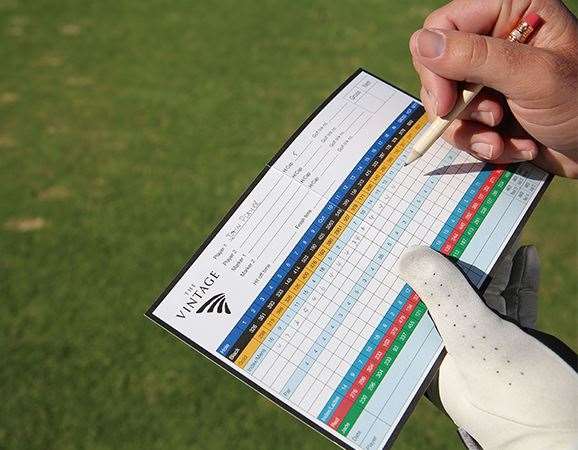Every golfer makes common mental errors during the course of a round. Learning from those blunders is one sure way to drop strokes from your handicap.
Words by Tracy Tressider M.Ed. PCC. Photography by Brendan James
All golfers are far too familiar with the golf gremlin, which lurks inside their head ready to sabotage their game.
Here are some tips to quieten the gremlin and teach you how to play golf out of your mind. Discover the five common mental errors every golfer makes so you can learn how to relax and play “in the zone”.
Golf is different in that you are given an opportunity to take time before each shot, to narrow your focus and to think about what you’re actually going to do. Although time to think may seem to make the game more elementary, it actually creates an opening for a series of diversions that contribute to the complexity of the game.
As you are standing over the ball, the slightest distraction, whether it be a sound, or a thought in your head, has the potential to seriously affect the outcome of your shot. In turn, one bad shot can then affect how you perform for the remainder of the round, simply because it has the ability to alter your state of mind.
1. OVER-THINKING IS A HAZARD
Thoughts of your grip position and over-thinking your stance and swing are diversions that take you away from the task at hand. Although having a pre-shot routine during practice is instrumental in the execution of your golf swing, over-thinking the mechanical processes during an actual round is detrimental to the flow of the action.
It is this uninterrupted flowing movement and a relaxed mental state that is essential to achieving consistent, positive results on the course. So the question is, how can you eliminate distractions such as nagging thoughts or other negative influences to improve your game?
There are several approaches to taking charge of your own mind game, but the first and most important is learning to accept what you can and can’t control. There are many things outside of your control; the weather, the wind, the speed of the greens, the idiosyncrasies or annoyances of your playing partner (pictured above). What is interesting is that all these things often cause us to get upset, which then creates a cascading effect into a ‘bad reaction’ which creates tension and thus a bad swing.
THE FIX: Remind yourself of what you can control (only yourself) and let go of the things you can’t control.
2. NO ROUTINE TO SPEAK OF
If you watch all the top golfers you will notice that they all have a pre-shot routine and no matter where they are on the golf course, or what state they are in, they will always go through their pre-shot routine.
What we can learn from this is the importance of a pre-shot routine in providing a feeling of control and thus confidence.
Keep in mind that pace of play is important and you are required to keep up with the group in front.
The R&A guideline is that each player should take only 40 seconds to play their shot, once they are able to play without interference or distraction.
This is plenty of time to access the shot you are facing, take into account any wind and select your target.
Set your club behind the ball, using an intermediate target in line with your ultimate target, to align the clubface. Take one last look at your target and then pull the trigger.
THE FIX: Establish a good pre-shot routine and stick to it especially when you feel your golf has gone off.
3. BECOMING TOO ATTACHED TO YOUR SCORE
How often have you turned after nine holes with 18 or 20 Stableford points only to crash and burn on the last three holes and end up with little more than 10 points on the back nine (pictured above)? Sound familiar?
If it does, you have become too attached to the outcome, which has caused your mind to race ahead in anticipation and now created those dreaded stress hormones that highjack your brain and prevent you from playing with relaxed feel and flow.
THE FIX: Let go of the outcome, be present and play in the moment.
4. NOT HAVING A TARGET
Too many golfers step up to a shot and look down the fairway and think, “I’ll hit it somewhere down there!” Without a specific target, your mind doesn’t really have a chance. Narrow your focus down to as small a target as possible. It might be a small area of different coloured grass, a shadow or a tree in the distance or it could even be a landmark off in the distance (pictured above).
Take a second or two to stare down the target, then go into your normal routine.
THE FIX: Narrow the focus to as small a target as possible.
5. BEING TOO HARD ON YOURSELF
Even the best golfers on Tour miss at least 20 percent of fairways, they miss 25 percent of greens in regulation and average at best 1.7 putts per green.
Have you ever intentionally hit the ball into the trees, or a lake? Have you ever meant to three-putted? No, of course, you didn’t do it intentionally. You did NOT intend to do it so cut yourself some slack, don’t be so hard on yourself and think of the positive things about being on a golf course and your positive thoughts when over your next shot.
THE FIX: Remind yourself the bad shot was not intentional and pick one thing you value about being able to play golf.
Related Articles

Video Lesson: Hear the swoosh past the ball

Playing From The Tips Ep.106: Texas Open, LIV Miami & LPGA Match Play















